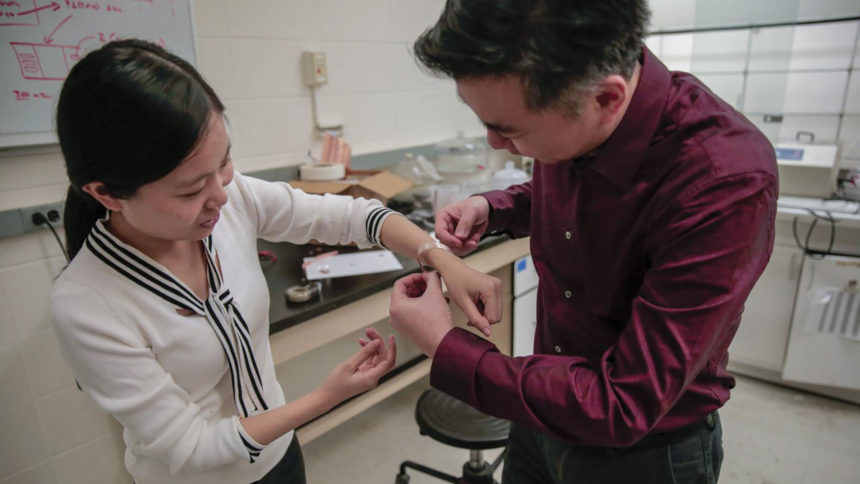
A new wound dressing uses a patient’s body movement to create gentle electrical pulses that stimulate healing.
In rodent tests, the bandages developed by engineers at the University of Wisconsin-Madison reduced healing times from nearly two weeks to three days.
“We suspected that the devices would produce some effect, but the magnitude was much more than we expected,” said Xudong Wang, a professor of materials science and engineering who reported the new method in the November issue of ACS Nano.
The new dressings eschew bulky external equipment for small electrodes at the injury site. They are linked to a band holding nanogenerators, which are looped around the torso. The expansion and contraction of the wearer’s ribs during breathing compels the nanogenerators to deliver low-intensity electric pulses.
The researchers determined the low-power pulses boosted viability for a type of skin cell called fibroblasts. Exposure to the nanogenerator’s pulses encouraged fibroblasts to line up and produce more biochemical substances that promote tissue growth.
The team is attempting to streamline its structure, allowing it to run off of small, imperceptible twitches or a heartbeat. The cost, Wang said, would not be “much more” than a regular bandage because it uses common materials.
“The device in itself is very simple and convenient to fabricate,” she said.
From the January 01, 2019 Issue of McKnight's Long-Term Care News




